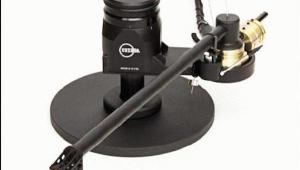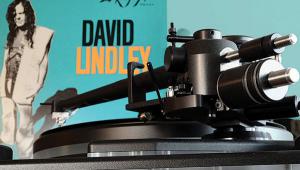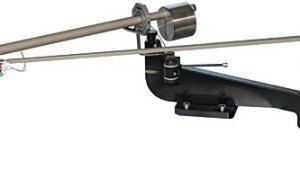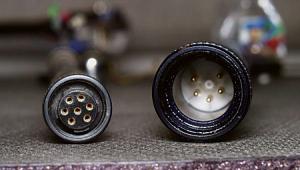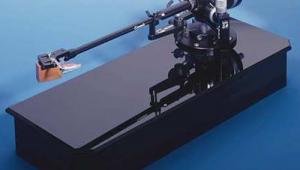Graham Model 2.0 tonearm Page 4
With the Hovland cable in the system, the Graham took on a relaxed, warm, more physical feel—yet all of the detail, depth, dynamic authority, and three-dimensionality remained. I like the Graham "sound" out of the box, wired with his choice of interconnect; I like it even more with the Hovland cable inserted.
The Precision Interface Technology cable—even more expensive ($990 for 0.5m, $1280 for 1.5m), but more substantially constructed than the Hovland and including Neutrik RCA plugs—also sounded somewhat richer than the one Graham supplies, but, to my ears, not quite as dramatically "right" as the Hovland. I think it's a testament to the Graham arm's basic neutrality and high resolving power that these cable changes had such a profound effect on the sound.
A Hovland representative told me that those "cheap"-looking, low-mass RCA plugs are very hard to find, and are used because they sound substantially better than the heavier, costlier kind usually associated with audiophilia. Go figure. If you already own a Graham arm and you find it on the "analytical" side, check out the Hovland, the PIT, or any other interconnect you can get your hands on.
Conclusion
The Graham 2.0 is clearly one of the finest tonearms in the world, and it has been updated and improved in the past few years. Can it be further improved? Perhaps. But as it is now, out of the box it offers a level of analog performance that puts it at the top of the heap, along with just a few other Class A arms. Earlier versions are upgradeable to the current version. In the case of the Graham 1.5, upgrading is very worthwhile.
The Graham arm offers a variety of strengths, including "first event" resolution of detail, explosive dynamics, overall transparency, tightly focused three-dimensional imaging, and accurate soundstaging depth and width. It is also timbrally neutral or slightly on the lean side, depending on your tastes and/or associated interconnects. Rich- and voluptuous-sounding it ain't, nor is the Immedia. The Graham comes with the easiest-to-use, most accurate setup jig I've ever used, and tools. An upgradeable "basic" arm—with aluminum armtube, brass side weights, and no tools or setup jig—is also available, for about $1000 less than the 2.0.
As always, issues of taste are involved here. I found the Graham to be among the most neutral, revealing, musically involving, and exciting arms I've heard. Others who've listened with me have found it somewhat cool and analytical, and lacking in emotional involvement. You've heard these arguments many times before in the perennial audiophile controversies—tubes vs transistors, digital vs analog, metal-domed tweeters vs cloth, etc.—and you probably know audiophiles who come down on either side of the debate.
These observations should be taken as general characteristics on a sliding scale, and not as definitive—associated equipment and personal taste, musical and otherwise, will affect the final result in your system. How much easier it would be to make sweeping pronouncements about which sounds the most like "live" music, about which is the "express ticket" to analog nirvana. You won't hear those from me. Both the Graham and Triplanar are well-engineered arms do a good job of extracting the information from the grooves. They both "make music."
- Log in or register to post comments

